What if a hand could do more than just replace what was lost? What if it could surpass it?
For decades, prosthetics were seen as a way to catch up—to help people with limb loss regain what they once had. But something is changing. The line between healing and enhancing is starting to blur. Today, bionic hands can grip with power, respond to thought, and even give feedback through touch. And tomorrow? They might just be able to do things no human hand ever could.
At RoboBionics, we’re not just building tools. We’re building possibility. We believe that prosthetics can offer not only restoration—but also reinvention. The question now is no longer just, “Can we make it feel like a hand?” It’s, “Can we make it better?”
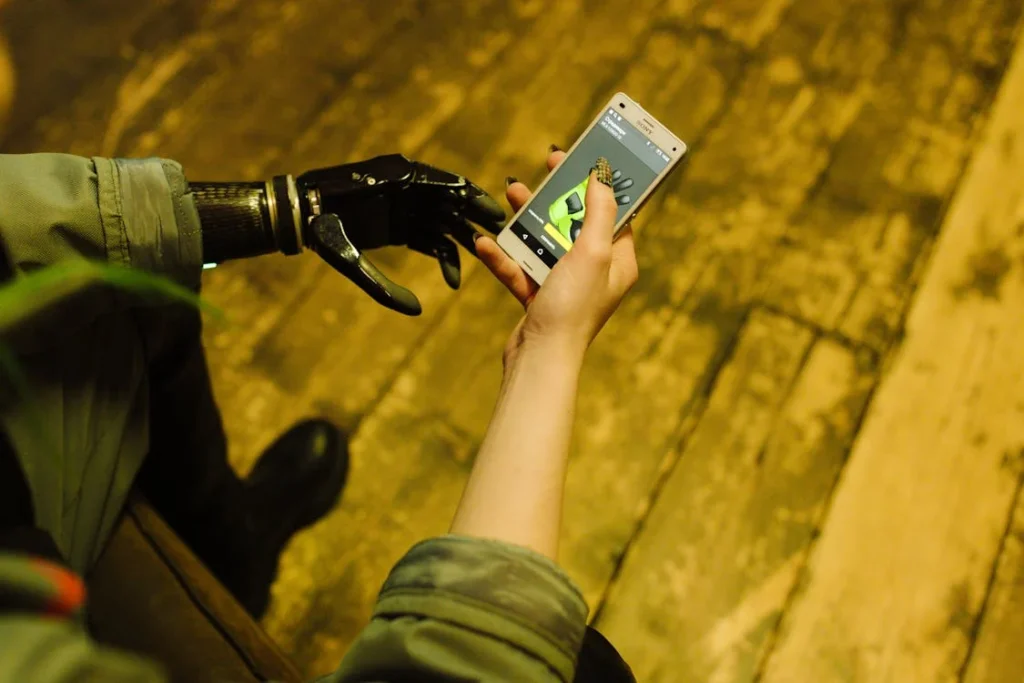
Redefining Strength: What Makes a Hand Superhuman?
More Than Muscle: The New Meaning of Power
When we think about strength, most people imagine muscle. Heavy lifting. Crushing grip. But real strength is more than just raw force. It’s control. It’s speed. It’s endurance. And in some ways, bionic hands are already matching—and sometimes even beating—what the human hand can do.
Let’s start with grip strength. A natural hand can hold objects firmly, but it gets tired. Muscles wear out. Fatigue sets in. But bionic hands, like our Grippy™, don’t get tired. They can hold tools, bags, steering wheels, or kitchen utensils for hours. The grip stays steady. The fingers don’t slip. That’s a kind of strength that goes beyond what the body can offer.
Now imagine being able to adjust that grip in micro-seconds based on what you’re holding. A glass bottle. A paper cup. A hammer. Each needs a different kind of grip. And our Sense of Touch™ technology makes that possible. It gives users real-time feedback—so they feel what they’re holding and adjust instantly. That means fewer dropped objects. Fewer accidents. More confidence.
Speed is another superpower. While natural fingers can react fast, connected bionic hands can react faster. With direct muscle signals and pre-programmed gestures, a smart hand can complete certain actions in half the time. For users, this means quicker typing, faster buttoning, smoother cooking. It’s not just about speed—it’s about flow. The kind of ease that lets you live without second-guessing every move.
And let’s talk about precision. Human fingers are amazing, yes. But they can tremble. They can get stiff. A smart bionic hand can repeat the same motion again and again—without shaking, without slowing down. It can hold a brush steady, thread a needle, even handle wires. For users with creative or technical jobs, this opens doors that may have felt shut forever.
Stronger Doesn’t Mean Heavier
People often assume that to be stronger, a device must be heavier. But that’s not true anymore. With new materials and smarter design, bionic hands are getting lighter and more powerful at the same time. Our Grippy™ hand is a perfect example. It packs multiple motors, sensors, and a full grip control system—into a frame light enough to wear all day.
This is a big deal. Because real-world strength isn’t just about what a hand can do—it’s about what a user is willing to do with it. If a hand is too heavy, too bulky, too hard to maintain, it doesn’t matter how strong it is. People won’t use it. That’s why we design our prosthetics to be wearable, breathable, and easy to live with.
When strength becomes invisible—when it feels natural, light, and effortless—that’s when it becomes life-changing.
The Human-Tech Partnership
Here’s something we believe deeply at RoboBionics: bionic hands don’t replace people. They partner with them.
The superhuman future is not about turning people into robots. It’s about building technology that supports, uplifts, and expands what it means to be human. That’s why we work so hard to make our devices listen to the user. To move with them. To learn from them.
Our technology doesn’t just take commands. It adapts. It remembers. It helps users train faster, recover quicker, and explore more. That kind of trust and responsiveness makes the hand feel like part of you—not something extra, but something essential.
When you reach for a doorknob and the hand knows what to do. When you pick up a child and feel steady. When you dress, eat, drive, and live without second thoughts—that’s not just recovery. That’s transformation.
And we’re just getting started.
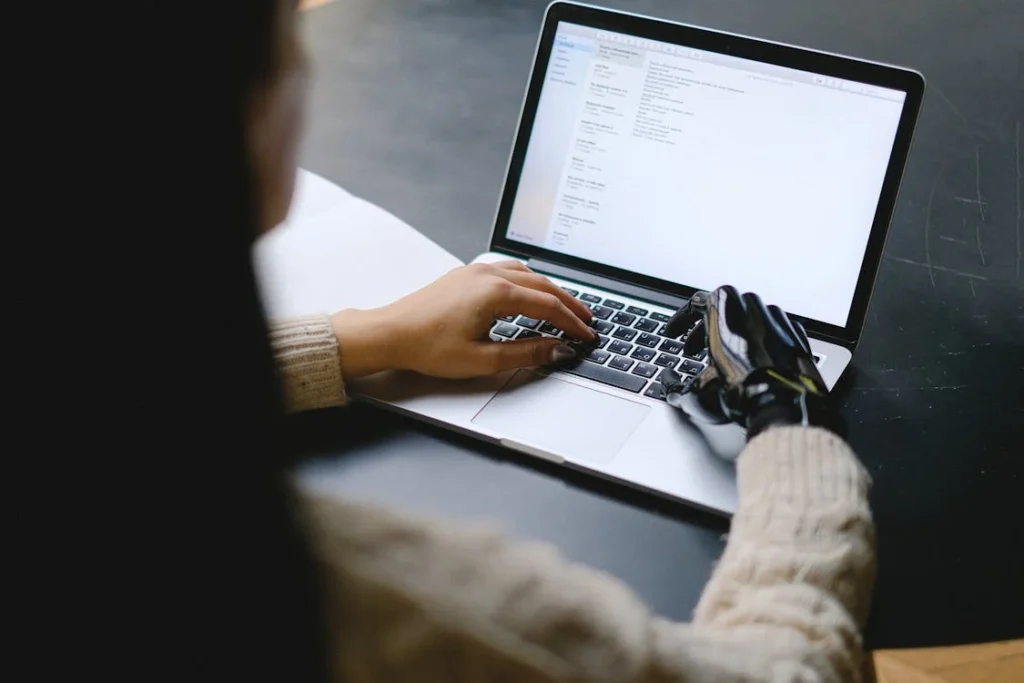
Beyond Biology: When Bionic Hands Break the Rules
The Limits of the Natural Hand—and How Tech is Pushing Past Them
The human hand is amazing. It can grip, feel, type, and wave. But it also has limits. It tires out. It shakes under pressure. It can’t always tell the difference between too much and too little force. Most importantly, it can’t upgrade itself. Once you’re born with it, that’s your hand for life.
Bionic hands don’t follow those rules.
With each new upgrade, connected prosthetics are moving into a new category—not just matching biology, but improving upon it. Our Grippy™ hand, for example, gets smarter the more you use it. It watches how you grip, how long you wear it, and even how your muscles behave across the day. Then it adapts. It doesn’t need months of training or practice. It learns you.
Human hands can’t do that.
Take pressure control. A natural hand relies on instinct. It learns over time, yes—but mostly by accident. You drop things, break things, and eventually, you adjust. But a bionic hand can sense pressure instantly. It uses sensors and algorithms to apply just the right grip, every time. It won’t break the eggs. It won’t crush the cup. It won’t let go when it shouldn’t. And it gets better the more it watches you.
This kind of intelligence changes how people live. It makes them faster, safer, and freer.
Memory and Adaptation: A Superhuman Feature
Here’s something no natural hand can do: remember yesterday’s movements to improve today’s actions.
Grippy™ can.
Let’s say you’ve been practicing picking up a water bottle. The first few times, you may need to look at your hand. You think about your muscles. You focus hard. But after a few tries, Grippy™ starts to remember the motion. It tunes itself. The next time you reach for that bottle, the hand is faster. More confident. More natural.
This memory system works for all kinds of gestures—brushing teeth, holding a pen, zipping up a bag. Over time, the hand shapes itself to your life. You don’t need to adapt to the tech. The tech adapts to you.
It’s like having a hand with a brain of its own—one that wants to help, and gets smarter every time you use it.
And that’s not something biology can do.
Built for the Unexpected
Another way bionic hands are becoming superhuman is by being more prepared for the unexpected.
Our natural hands freeze when they’re injured, or if we’re too tired. They drop things if we’re distracted. But a connected bionic hand doesn’t forget its job. Even if your focus slips, the sensors keep working. They hold the item steady. They stop the grip at just the right level. They stay strong, even when you’re not.
That means fewer accidents. Less stress. More confidence.
Even better, a bionic hand can work in environments that human skin might avoid—dusty kitchens, wet workshops, outdoor heat. Our hands are water-resistant, sweat-tolerant, and built to survive tough Indian conditions. That opens up new roles and jobs for users that might have been off-limits before.
This is more than just durability. It’s resilience. It’s readiness.
It’s superhuman.
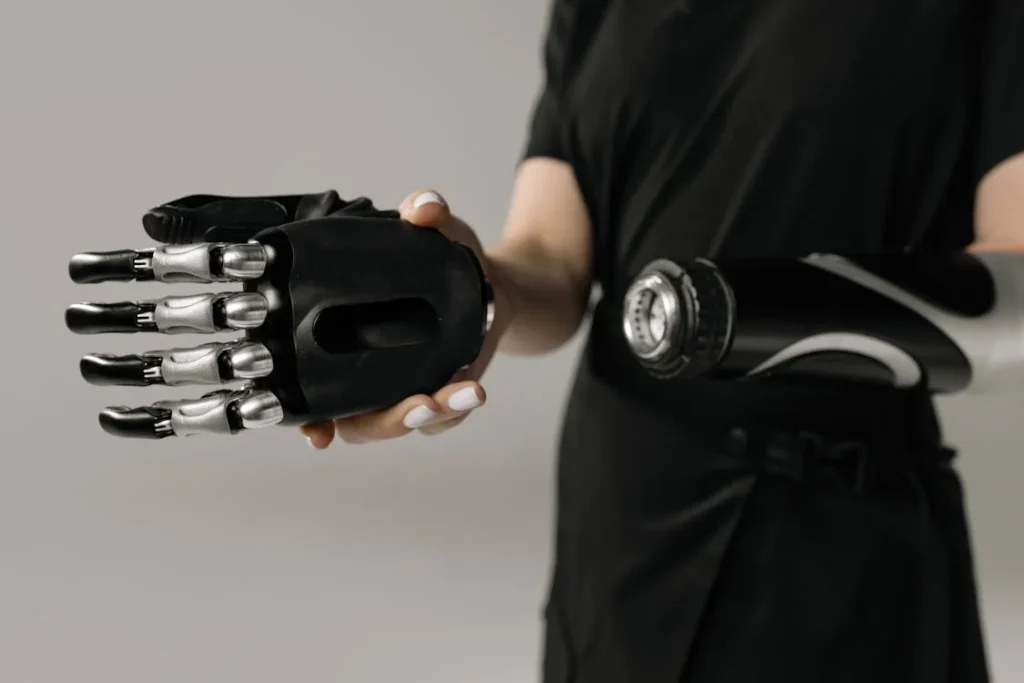
Superhuman in the Everyday: Real Lives, Real Change
When Small Tasks Become Big Wins
It’s easy to think of superhuman strength as something out of a comic book. Lifting cars. Breaking chains. But in real life, super strength shows up in quiet ways—like opening a jar without pain. Like typing a full email without help. Like holding a spoon steady enough to feed yourself with confidence.
For someone with limb difference, these are not small wins. They are milestones. And smart bionic hands are turning them into daily victories.
With a hand like Grippy™, a person doesn’t have to hope the grip works—they know it will. They don’t have to wait for someone else to help—they do it themselves. This changes how they live. It changes how they feel. Suddenly, they’re not limited. They’re empowered.
We’ve seen users who couldn’t cook now chop vegetables and knead dough. We’ve seen people who stopped painting now create art again. Some are even going back to school, learning new trades, or starting businesses. Because when your hand listens to you—and helps you succeed—it opens up your whole life.
That’s not just strength. That’s freedom.
Confidence as a Superpower
Let’s talk about something no sensor can measure—confidence. It’s not built into the software. It’s not listed in the features. But for every user who puts on a smart bionic hand, confidence is often the biggest gift of all.
Confidence to walk into a room without hiding your hand.
Confidence to reach out and shake someone’s hand—without fear, without hesitation.
Confidence to be seen, and not feel less.
This kind of emotional strength is what truly makes these devices superhuman. They give people a way to reclaim their identity. To rebuild their story. To stop seeing themselves as “less than” and start living like they are more than.
We’ve had users tell us, “This hand gave me my pride back.” That’s when we know we’re not just building devices. We’re building dignity.
And as more people start to wear these hands proudly—as they customize them, show them off, and share their journeys—they inspire others. The idea of what’s “normal” starts to shift. Disability doesn’t mean invisibility anymore. It means possibility. It means progress.
Not Just for the Few—But for the Many
When we think of advanced tech, we often think of exclusivity—something rare, expensive, out of reach. But at RoboBionics, we believe superhuman ability should be for everyone.
That’s why we’ve worked hard to make Grippy™ affordable. While imported bionic hands can cost over ₹10 lakh, ours starts around ₹2.15 lakh. That’s still an investment, yes—but it’s a massive step toward equality. And we’re working every day with partners, NGOs, and rehab centers to bring that number down even more.
Because real power doesn’t come from helping one person. It comes from lifting many. From creating a future where anyone, anywhere in India, can walk into a center and walk out with a hand that changes their life.
And that’s our goal.
To take “superhuman” from science fiction to everyday fact.
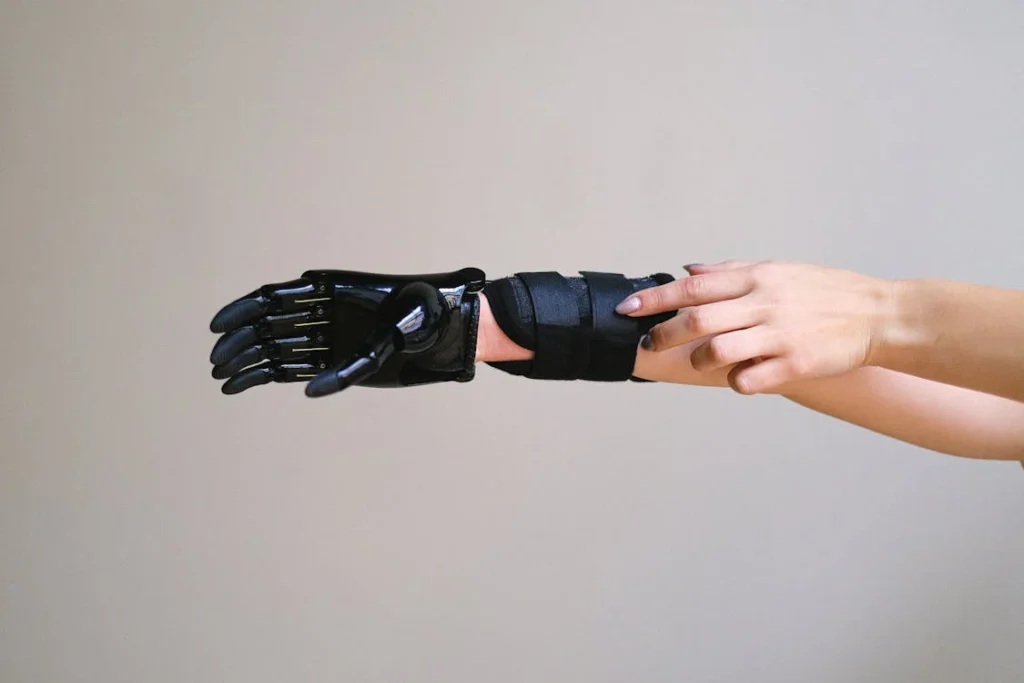
Enhancement, Not Replacement: The Next Step in Human Evolution
From Fixing to Upgrading
For a long time, prosthetics were all about replacing what was lost. A hand was lost, so we built a new one. The goal was to get “close enough” to what nature had once provided. And for many years, that was a good goal—important, necessary, life-changing.
But now, we’re reaching a turning point. Bionic technology is no longer just catching up to biology. In many ways, it’s starting to surpass it. And that raises a powerful question: What if prosthetics aren’t just for people with limb loss anymore? What if they become tools for anyone who wants to do more?
It sounds bold—but it’s already happening. We’re entering a world where wearable tech can do things human limbs never could. Stronger grips. Faster motions. Built-in memory. Sensors that never sleep. Hands that sync with apps, predict actions, and learn over time.
And people are starting to notice.
At RoboBionics, we’ve had people say, “I wish I had a hand like that just to do my work faster.” That’s not a joke. That’s a sign. A sign that the world is beginning to see bionic strength not as a way to fill a gap—but as a way to unlock potential.
This shift—from replacement to enhancement—is the beginning of something big. It’s a new kind of evolution. Not survival of the fittest, but advancement of the equipped.
The Ethics of Superhuman Tech
With great power comes great responsibility—and questions. If we can build bionic hands that outperform natural ones, should we? Who should have access? What about children? What about people who haven’t lost a limb but want an edge in work, sports, or art?
These are not easy questions. And they don’t have simple answers. But they are worth asking.
At RoboBionics, we believe technology should always serve humanity—not replace it. Our mission is to build devices that uplift, not divide. That restore dignity, not inflate ego. That open doors, not close them.
That’s why we start with empathy. Every Grippy™ hand is designed for someone who needs it—not just someone who wants it. And every upgrade, every feature, is built to bring people closer to independence, joy, and self-worth.
As this tech grows, we’ll need guidelines. We’ll need ethics. We’ll need wisdom. But most of all, we’ll need people—people who understand that superhuman doesn’t mean better than human. It means more fully human.
More capable. More confident. More connected.
The Real Future: Tech That Feels Like You
In the end, superhuman isn’t about steel or wires. It’s about a future where technology fits so well into your life that you forget it’s even there. It just feels like part of you.
A hand that grips without thinking.
That learns your habits.
That helps you cook, work, care, and create—without struggle.
That doesn’t just make you functional again, but unforgettable.
This is what we’re building at RoboBionics. Not just devices. Not just innovation. But a new way of being—stronger, bolder, and more human than ever before.
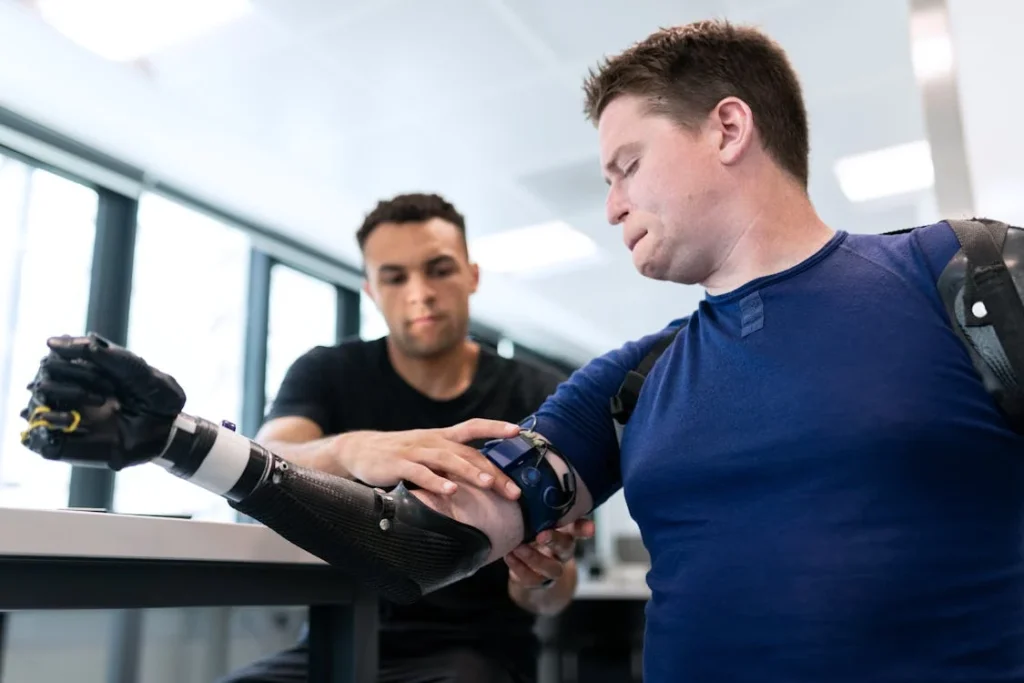
Inspiring a Generation: How Bionic Hands Spark Hope and Innovation
From Curiosity to Creation
There’s something magical about seeing a child’s eyes light up when they see a bionic hand in action. It’s not fear. It’s not confusion. It’s wonder. For them, a prosthetic that moves with thought and responds with touch isn’t a reminder of loss. It’s a sign of what’s possible. And that spark of imagination? That’s how revolutions begin.
We’ve noticed this again and again at RoboBionics. Whether it’s at schools, science fairs, or community demo sessions, whenever young people see someone using Grippy™, they don’t ask, “What happened to them?” They ask, “How does it work?” Then, “Can I build one too?” That shift—from sympathy to curiosity—is one of the most powerful outcomes of modern prosthetic technology.
Suddenly, prosthetics are not just about health. They’re about hope. They’re about science, creativity, and storytelling. They’re about real-world examples of robotics, bioengineering, and design—right in front of them, alive and moving. This is education at its most exciting. And it’s planting seeds.
A Real-Life Superhero Story
For kids growing up with limb differences, seeing someone wear a smart, stylish, powerful bionic hand can be life-changing. It doesn’t just change how others see them. It changes how they see themselves. They no longer have to settle for hiding, for fitting in, for being “fixed.” They get to stand out—as pioneers, as leaders, as examples of what the future looks like.
One of our young users once said, “This hand makes me feel like Iron Man.” And that wasn’t just a cute line. It was truth. It was power. Because the tech didn’t just restore his ability to write or pick up a ball—it restored his confidence. It gave him a reason to be proud of something he once felt ashamed of.
That shift can shape an entire life. It can push someone to pursue engineering, to lead awareness campaigns, to become a voice for others. It transforms disability into ability with direction.
Growing India’s Innovation Culture
And this ripple effect doesn’t stop with the user. It spreads to classmates, cousins, neighbors, teachers. Suddenly, a whole group of young people are exposed to what’s possible when science meets compassion. When technology isn’t just cool—but meaningful.
India has no shortage of young minds bursting with ideas. What we need are more sparks. More role models. More stories of tech that matters. And what better example than a bionic hand that helps someone live better, move better, be better?
At RoboBionics, we’ve had engineering students volunteer just to understand how Grippy™ works. We’ve had school children ask to write essays and do presentations on prosthetic hands. We’ve even had kids ask how they can design better ones when they grow up. That’s the kind of energy that will shape India’s future in med-tech, robotics, and AI.
Because today’s smart bionic hand? It’s tomorrow’s classroom lesson. Tomorrow’s hackathon idea. Tomorrow’s dream career.
And all of it starts with one moment—when a young person sees that human strength isn’t about having all the pieces. It’s about building something extraordinary from what you’ve got.
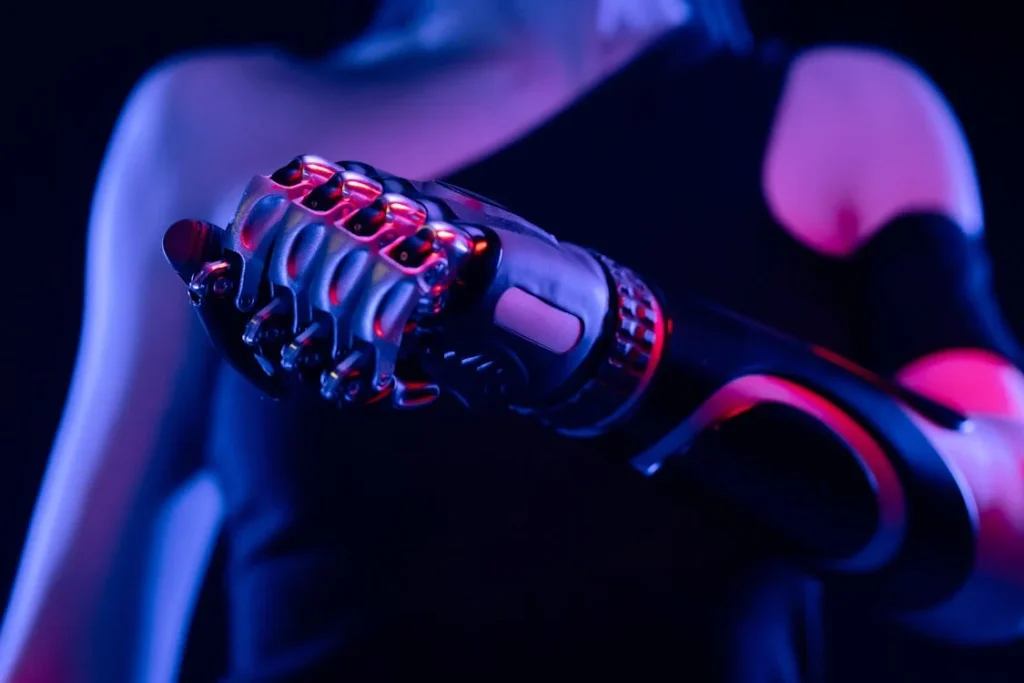
The Data Within: How Bionic Hands Are Revolutionizing Healthcare From the Inside Out
The Hidden Intelligence in Every Move
Every time a person uses their bionic hand—whether it’s picking up a pencil or squeezing toothpaste—a story is written in data. A small, invisible trail of information gets recorded: how strong the grip was, how long it lasted, how fast the fingers moved, how steady the hold was.
These aren’t just numbers. They’re signs of health, strength, fatigue, and recovery. And when collected over time, they become a goldmine of medical insight—not just for the user, but for doctors, therapists, and caregivers.
Unlike traditional prosthetics, connected bionic hands like Grippy™ turn everyday use into live feedback. Through our app and sensors, users can track how they’re progressing. Are they using more grip strength than before? Are certain gestures harder in the evening? Has their wear time increased? These patterns help users feel more in control of their journey.
But this data doesn’t stay trapped in the device. It becomes part of a bigger picture.
Personalized Therapy, Powered by Real Life
In the past, rehab was based on clinic visits. You showed up, explained what felt wrong, and hoped the therapist could help. But it was all based on memory, guesswork, and how you felt that day.
Now, imagine a therapist looking at a dashboard that shows your last two weeks of hand usage in real-time. They see how often you used each grip. How fast you reacted to commands. Where you might be struggling silently. This turns therapy into a smart, targeted process. No wasted sessions. No missed signs. Just focused, data-driven help.
With bionic data, rehab becomes personal. It follows your rhythm, not a fixed schedule. It supports you not just during appointments—but every day.
We’ve seen therapists adjust exercises based on how the Grippy™ was behaving at home. We’ve had doctors spot early signs of muscle fatigue just by watching the grip strength curve flatten. That kind of prevention wasn’t possible before. Now it’s becoming standard.
Population Health, One Grip at a Time
Here’s something exciting: when hundreds of users share their anonymized data, we don’t just learn about one person—we learn about many. We start to see patterns across regions, lifestyles, jobs, and age groups.
How do users in Mumbai compare to those in rural Tamil Nadu? Do schoolchildren use grips differently than retired seniors? Does heat affect muscle signals? Does stress?
This kind of data helps us design better hands. It tells us what works in real life—not just in the lab. And in the long run, it helps India build a smarter, more inclusive prosthetic care system.
It also opens up new possibilities for public health research. Can prosthetic data predict early signs of nerve issues? Can it help track recovery after surgery? Can it detect conditions like tremors or overuse syndromes before they worsen?
We believe the answer is yes. And we’re working to make it happen.
Because when every movement counts—not just for one user, but for many—we move from innovation to intelligence. From product to platform. From treatment to transformation.
Conclusion
Bionic hands are no longer just about restoring what’s lost. They’re about reimagining what’s possible. They move, feel, learn—and sometimes, even outperform the human hand. But their true power lies beyond mechanics. It’s in the freedom they give. The confidence they restore. The future they unlock.
At RoboBionics, we’re not just building prosthetics. We’re building self-belief. We’re turning technology into a tool for dignity, creativity, and strength. And as our hands grow smarter, lighter, and more connected, the line between human and superhuman begins to blur.
If you’re ready to move beyond limits, beyond expectations—beyond ordinary—your next step starts here.
👉 Book your free demo now and experience the future, in your hands.



